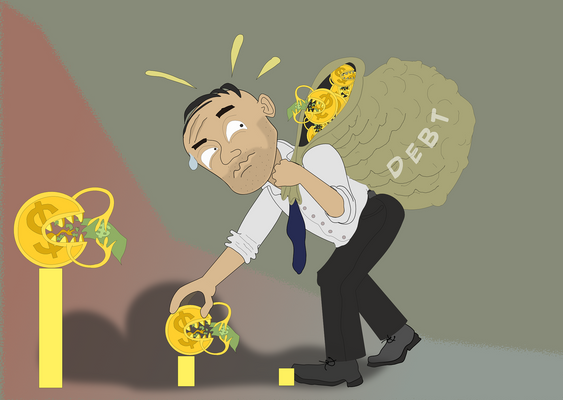5.3.2
External Sources of Finance
External Sources of Finance
External Sources of Finance
External sources of finance raise finance (money) from a third party. The finance can be used to fund large, long-term investments. However, external finance can be more costly, because loans usually charge interest (which isn't paid if a company funds growth with retained earnings). Some sources of external finance are:


Bank loans or mortgages
Bank loans or mortgages
- Bank loans and mortgages are very important for many businesses. A business borrows money from a bank and then pays interest on the money borrowed.
- It is often harder for new businesses to get bank loans because banks see them as riskier.


Loans from family and friends
Loans from family and friends
- Start-ups often use loans from family and friends. This is usually because the entrepreneur doesn’t have enough personal savings to finance the investment.
- If the entrepreneur gives up equity (a share of the business) then this is not a loan.


Hire purchases
Hire purchases
- This is when a business buys something and instead of paying for it upfront pays for it in installments.
- When PSG bought Kylian Mbappe from Monaco, they didn’t pay the whole amount at the time and instead completed the purchase in different stages.
- This lets businesses buy things (like machinery) for the business that they otherwise wouldn’t be able to afford.


Trade credit
Trade credit
- Trade credit describes when businesses pay suppliers at a later date. It involves buying something now and paying for it later.
- Supermarkets use trade credit and trade creditors a lot, taking delivery of food and then paying the suppliers at a later date.


Government grants
Government grants
- A government may give grants (money) to businesses to research things that the government is interested in.
- The Horizon 2020 fund is a set of grants given out by the countries in the European Union.
External Sources of Finance
External Sources of Finance
External sources of finance raise finance (money) from a third party. The finance can be used to fund large, long-term investments. However, external finance is often more expensive because businesses pay interest on loans. There are several sources of external finance:


Debt factoring
Debt factoring
- Debt factoring involves businesses selling their debt to a third party business.
- The business selling its debt will gain cash immediately rather than wait for debts to be settled although the business will sell its debt for less than its original value.
- The third party that buys this debt will then arrange and organise invoices and ensure that the debt money is collected. The third party business will retain a fee to cover the costs of its debt collection service.


Overdraft
Overdraft
- An overdraft is a service offered by banks allowing businesses to borrow an amount of money up to a limit which has been agreed in advance.
- Overdrafts are flexible as they allow a business to borrow as much as it wishes provided that the amount stays within an agreed limit.
- Businesses often pay for this flexibility through higher interest rates.


Venture capital
Venture capital
- Venture capital involves investors, or venture capitalists, providing a business with loans and share capital which is usually to support business growth.
- Venture capitalists will often ask for some control of the business they are investing in and this can be through the issue of shares or through the appointment of venture capitalists as non-executive directors of the business.
1What is Business?
1.1Understanding the Nature of Business
1.2Understanding Different Business Forms
1.3External Environments
2Managers, Leadership & Decision Making
2.1Understanding Management
2.2Understanding Management Decision Making
2.3Understanding Stakeholders
3Decision Making to Improve Marketing Performance
3.1Decision Making to Improve Marketing Performance
3.2Understanding Markets & Customers
3.3Market Segmentation, Targeting & Positioning
3.4Marketing Mix
3.4.1Marketing Mix
3.4.2Product Decisions
3.4.3Pricing Decisions & Price Skimming
3.4.4Pricing Decisions & Price Penetration
3.4.5A-A* (AO3/4) - Pricing & Competition
3.4.6Promotional Decisions
3.4.7Promotional Decisions 2
3.4.8Promotional Decisions 3
3.4.9Distribution Decisions
3.4.10Distribution Decisions 2
3.4.11Digital Marketing
3.4.12Evaluating Digital Marketing
3.4.13A-A* (AO3/4) - The Marketing Mix & Promotion
4Decision Making to Improve Operational Performance
4.1Setting Operational Objectives
4.2Analysing Operational Performance
4.3Increasing Efficiency & Productivity
4.4Improving Quality
4.5Managing Inventory & Supply Chains
5Decision Making to Improve Financial Performance
5.1Financial Objectives
5.2Analysing Financial Performance
5.3Sources of Finance
5.4Improving Cash Flow & Profit
6Improving Human Resource Performance
6.1Human Resource Objectives
6.2Analysing Human Resource Performance
6.3Improving Organisational Design
6.4Improving Motivation & Engagement
6.5Improving Employer-Employee Relations
7Analysing the Strategic Position of a Business
7.1Mission, Corporate Objectives, Strategy
7.2Financial Ratio Analysis
7.3Overall Performance
7.4Political & Legal Change
7.5Economic Change
7.6Social & Technological Environment
7.7Competitive Environment
7.8Investment Appraisal
8Choosing Strategic Direction
8.1Choosing Areas of Competition
8.2Choosing How to Compete
9How to Pursue Strategies
9.1Change in Scale
9.2Assessing Innovation
9.3Assessing Internationalisation
9.4Digital Technology
10Managing Strategic Change
10.1Managing Change
10.2Managing Organisational Culture
10.3Managing Strategic Implementation
10.4Problems with Strategy
Jump to other topics
1What is Business?
1.1Understanding the Nature of Business
1.2Understanding Different Business Forms
1.3External Environments
2Managers, Leadership & Decision Making
2.1Understanding Management
2.2Understanding Management Decision Making
2.3Understanding Stakeholders
3Decision Making to Improve Marketing Performance
3.1Decision Making to Improve Marketing Performance
3.2Understanding Markets & Customers
3.3Market Segmentation, Targeting & Positioning
3.4Marketing Mix
3.4.1Marketing Mix
3.4.2Product Decisions
3.4.3Pricing Decisions & Price Skimming
3.4.4Pricing Decisions & Price Penetration
3.4.5A-A* (AO3/4) - Pricing & Competition
3.4.6Promotional Decisions
3.4.7Promotional Decisions 2
3.4.8Promotional Decisions 3
3.4.9Distribution Decisions
3.4.10Distribution Decisions 2
3.4.11Digital Marketing
3.4.12Evaluating Digital Marketing
3.4.13A-A* (AO3/4) - The Marketing Mix & Promotion
4Decision Making to Improve Operational Performance
4.1Setting Operational Objectives
4.2Analysing Operational Performance
4.3Increasing Efficiency & Productivity
4.4Improving Quality
4.5Managing Inventory & Supply Chains
5Decision Making to Improve Financial Performance
5.1Financial Objectives
5.2Analysing Financial Performance
5.3Sources of Finance
5.4Improving Cash Flow & Profit
6Improving Human Resource Performance
6.1Human Resource Objectives
6.2Analysing Human Resource Performance
6.3Improving Organisational Design
6.4Improving Motivation & Engagement
6.5Improving Employer-Employee Relations
7Analysing the Strategic Position of a Business
7.1Mission, Corporate Objectives, Strategy
7.2Financial Ratio Analysis
7.3Overall Performance
7.4Political & Legal Change
7.5Economic Change
7.6Social & Technological Environment
7.7Competitive Environment
7.8Investment Appraisal
8Choosing Strategic Direction
8.1Choosing Areas of Competition
8.2Choosing How to Compete
9How to Pursue Strategies
9.1Change in Scale
9.2Assessing Innovation
9.3Assessing Internationalisation
9.4Digital Technology
10Managing Strategic Change
10.1Managing Change
10.2Managing Organisational Culture
10.3Managing Strategic Implementation
10.4Problems with Strategy
Unlock your full potential with Seneca Premium
Unlimited access to 10,000+ open-ended exam questions
Mini-mock exams based on your study history
Unlock 800+ premium courses & e-books
